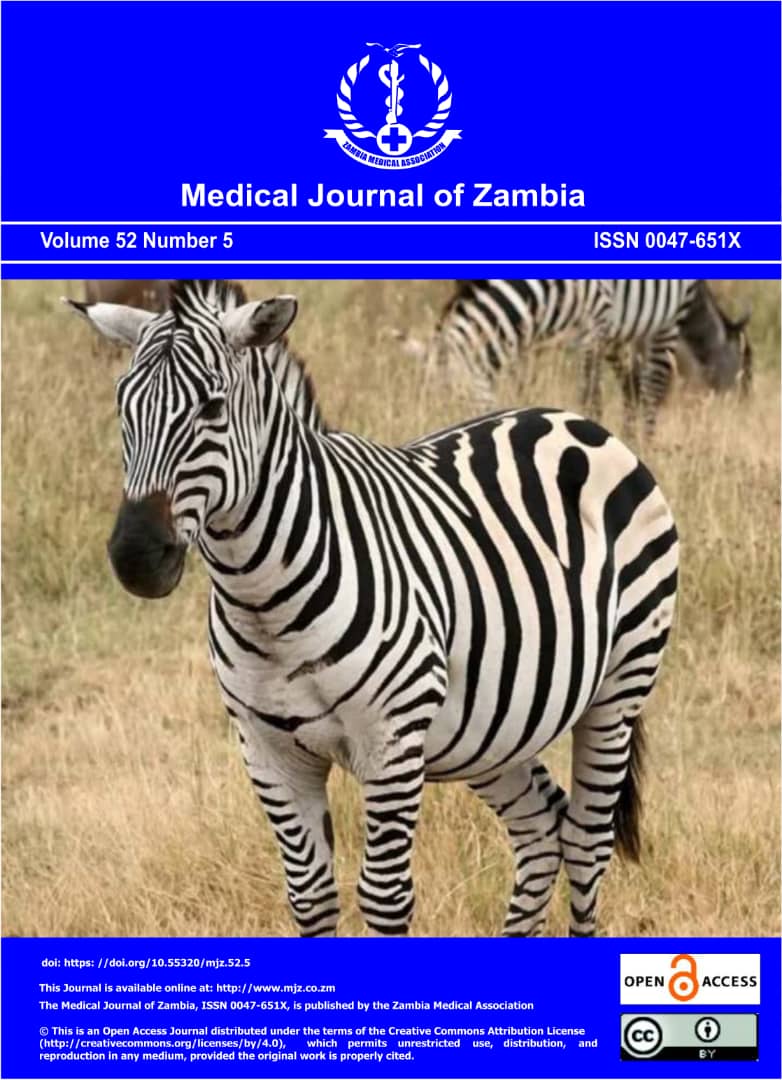Socio-economic determinants of early antenatal care utilization in Zambia, 2007–2019: Evidence from the Demographic and Health Surveys
DOI:
https://doi.org/10.55320/mjz.52.5.775Keywords:
SSA, Zambia, ANC, ANC4+Abstract
INTRODUCTION: The World Health Organisation (WHO) through its member states has implemented Focused Antenatal Care (FANC) models and 2016 ANC guidelines. Conventional analyses on ANC uptake have focused on women having at least four ANC visits regardless of when the women have such visits. Therefore, we present the uptake of at least four early ANC (ANC4+) visits amongst women of reproductive age in Zambia between 2007 and 2019 using the Zambia Demographic and Health Survey (ZDHS).
METHODS: We used data from ZDHS collected between 2007 and 2019. All women aged between 15-49 years were included in this analysis. The outcome was early ANC4+ defined as having at least four ANC visits and having the first ANC visit within four months of pregnancy. Weighted univariate, bivariate logistic regression and multivariate logistic regression was conducted in Stata version 17. To determine whether a factor was included in the model, the likelihood ratio test was used with a statistical significance of P< 0.05 as the threshold.
RESULTS: Of the 20661, 11633 (56%) of the women had attended early initiation of ANC4+. We observed increasing trends in the proportion of women with early initiation of ANC4+ from 55% in 2007 to 63% in 2018/19. There was a decreasing trend in the odds in early initiation of ANC4+ with the number of parity while there was an increasing trend in the odds in early initiation of ANC4+ with higher level of education. Being from richer household was associated with reduction in the likelihood of ANC4+ (OR= 0.81, 95%CI: 0.66-0.99, P=0.03). Of the 12333 women with at least 4 ANC visits regardless of timing of their first visit, 27% reported late for ANC.
CONCLUSION: The uptake of early ANC4+ increased between 2007 and 2019 in Zambia. However, there were inequalities due to wealth, education and parity. Our current analytical approach has demonstrated that 27% of the women that would have been misclassified as having at least ANC4+ using conventional analysis were actually late for ANC. We provide some key considerations in ensuring that Zambia and other similar settings are able to achieve universal coverage of antenatal care by 2030.
Downloads
Downloads
Published
Issue
Section
License
Copyright (c) 2025 Medical Journal of Zambia

This work is licensed under a Creative Commons Attribution-NonCommercial 4.0 International License.









